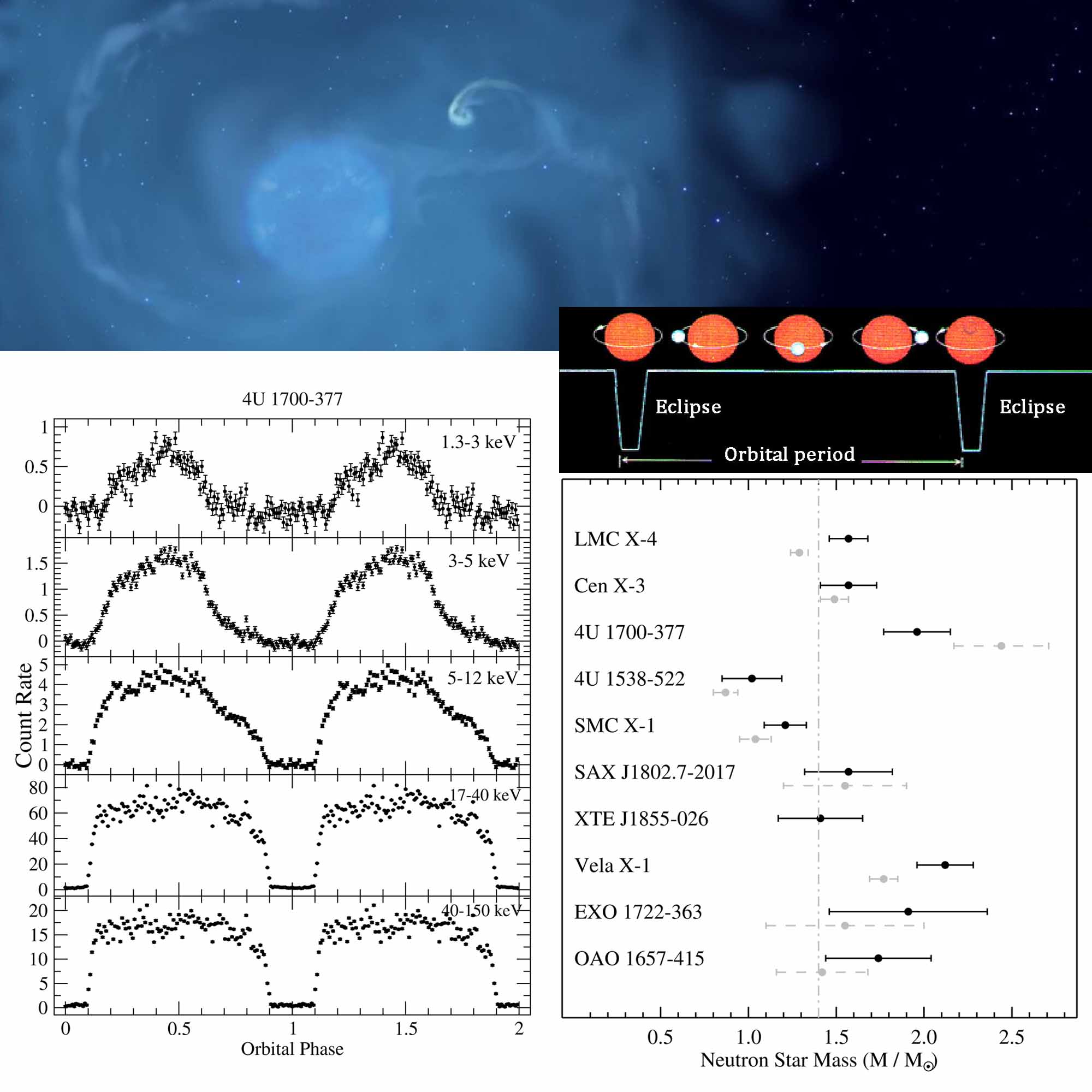High-mass X-ray binaries (HMXBs) are among the brightest X-ray sources in our Galaxy. In these systems, a neutron star is accreting mass from a massive companion star. Matter is captured directly from the companion wind and, in some cases, through the mediation of an accretion disk. When it falls to the neutron star, it is heated up to millions of degrees and therefore emits large amounts of X-rays.
Among the more than hundred HMXBs, only a few sources have an inclination high enough so that the companion periodically occults the neutron star, giving rise to X-ray eclipses. For these sources, it is possible to infer with higher precision various orbital parameters, as well as the mass of the neutron star, from the measured duration of the eclipse.
As most HMXBs have rather long (1-10 days) orbital periods, this requires extensive observations. Taking advantage of the available long-term monitoring observations of ten eclipsing HMXBs, carried out with the hard X-ray imager on-board INTEGRAL, IBIS/ISGRI, in the 17-150 keV band, and the All Sky Monitor (ASM; 2-12 keV) on-board RXTE, it was possible to obtain the most accurate ephemeris available so far for these sources.
INTEGRAL, with an accumulated observation times ranging from 200 to 1100 hours for the different sources, has provided for the first time accurate mean orbital light curves at higher (17-150 keV) energy, revealing that the eclipses are much less affected and distorted by asymmetric absorption than at lower energy (see figure, lower left). All high-energy eclipses look sharp and symmetric, thus permitting to achieve an unprecedented accuracy in the determination of the occultation time.
More accurate eclipse durations have been derived, leading to revised values of neutron star masses (see figure, lower right). In most cases, the measured eclipses are significantly shorter than previously reported in the literature, and thus the estimated NS masses are generally larger than previously thought. Though the measured masses still cover a rather wide range of (1.0-2.1) M⊙, a major fraction is beyond the canonical 1.4 M⊙ value. The exact equation of state (EoS) of neutron stars is still not known. Very soft (EoSs) predict maximum NS masses in the 1.4-1.5 M⊙ range (this occurs when the NS core is made by exotic matter as kaons, hyperons, and pions), whereas stiff EoSs can reach up to 2.4-2.5 M⊙.
The new results seem to favor stiff EoSs. They also constitute a database to be used for population and evolutionary studies of HMXBs, as well as theoretical modelling of long-term accretion in wind-fed X-ray binaries.
Publication :
- "The ephemeris, orbital decay, and masses of 10 eclipsing HMXBs"
Falanga, M., Bozzo, E., Lutovinov, A., Bonnet-Bidaud, J.M., Fetisova, Y. & Puls, J.,
2015, Accepted for publication on A&A, arXiv:1502.07126
http://xxx.lanl.gov/abs/1502.07126 - see the INTEGRAL POM on the ESA website
Voir version française

